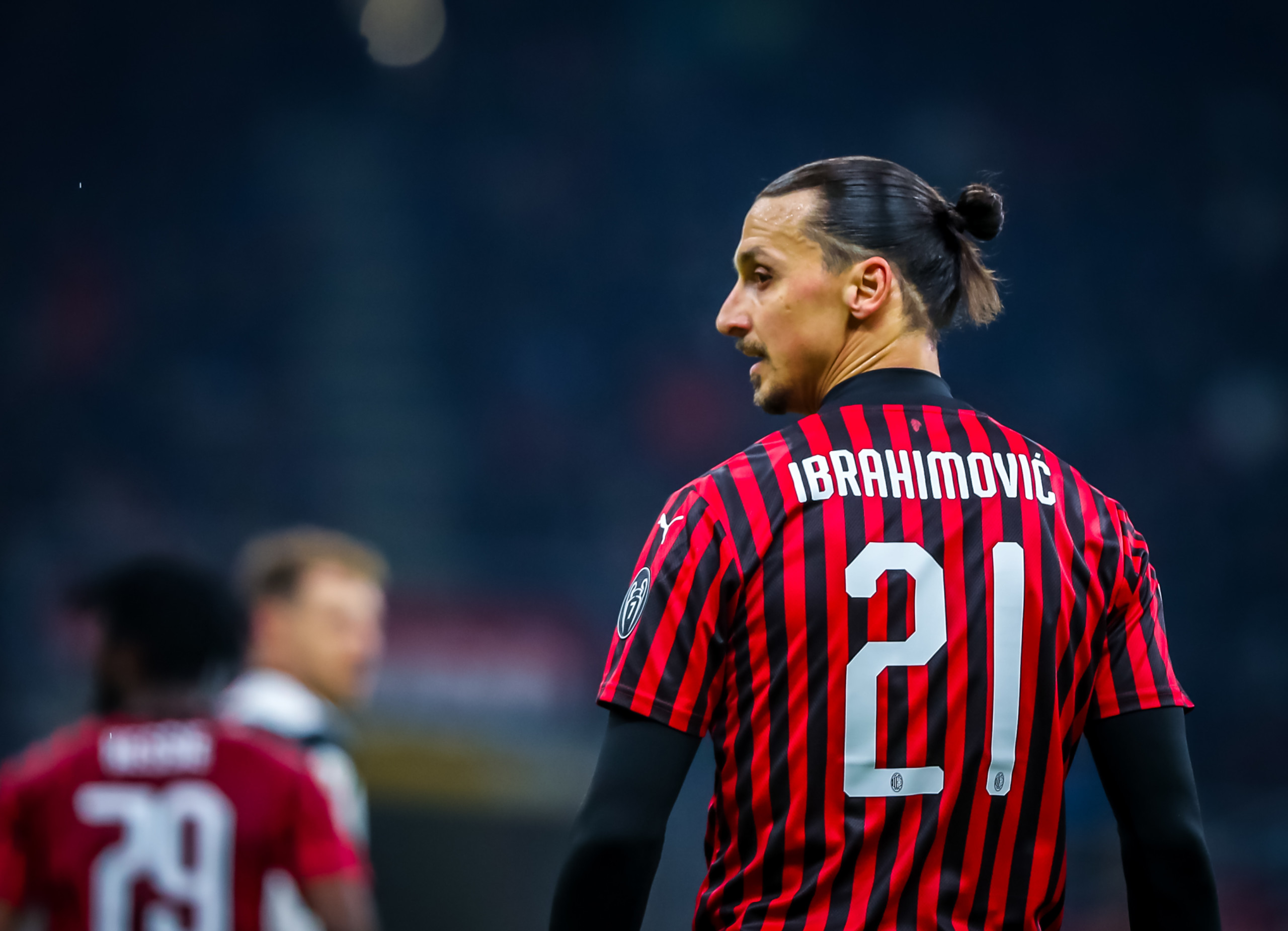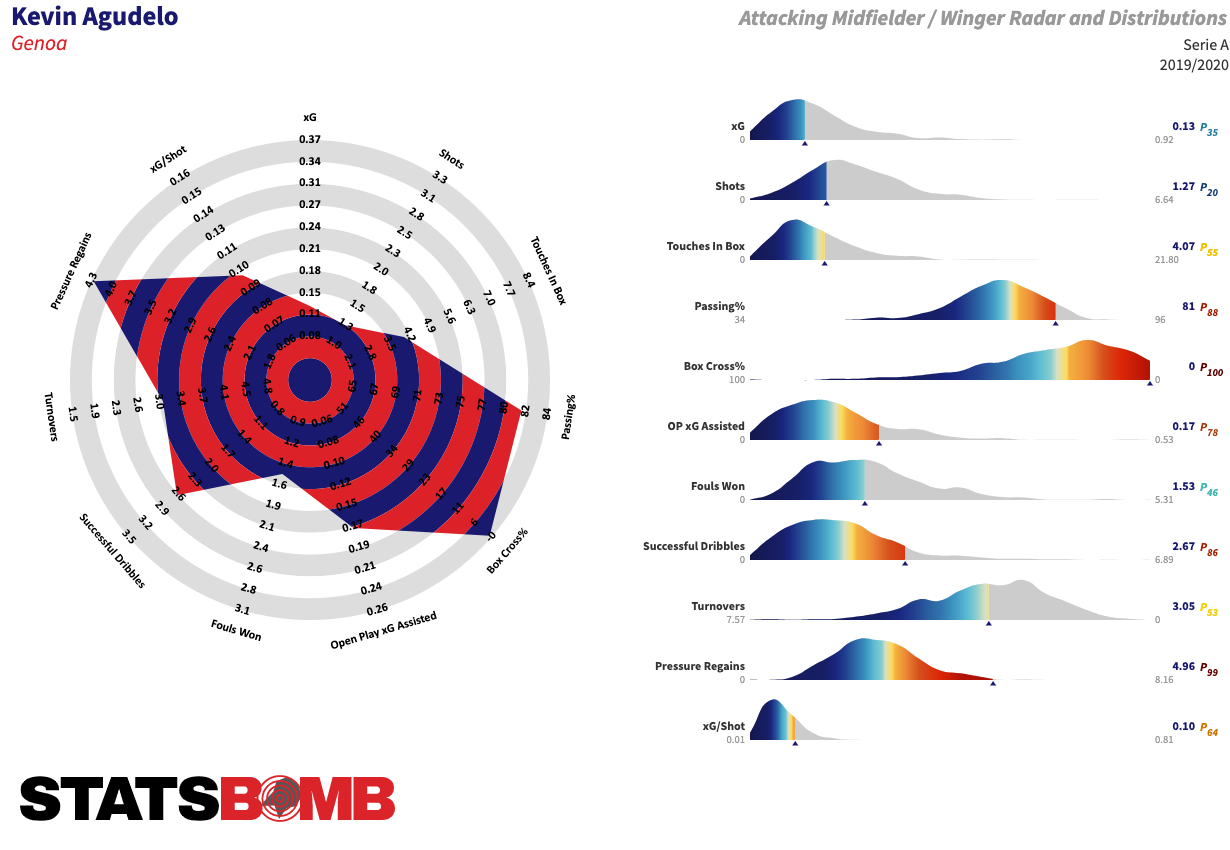Flamengo and Palmeiras are the last two winners of the Copa Libertadores, and one of them will again get their hands on the trophy when they meet in the final of the 2021 edition in Montevideo on Saturday. It is the second consecutive all-Brazilian final and one that features representatives from each of its two primary cities: Rio de Janeiro and São Paulo. Both teams are on course to finish in the top three domestically this season -- although only Flamengo still have a chance of overhauling champions elect Atlético Mineiro -- and while Flamengo have been the better team in terms of both results and the underlying numbers over the course of the campaign, the difference isn’t so great as to think the result of the final is a foregone conclusion. Flamengo are a much more possession-orientated team, building up short from the back and into midfield and dominating the ball in their matches. They hold a 60% share of possession on average -- four percentage points clear of the next team. Palmeiras hover much closer to the 50% mark and are more direct in their approach, with one of the longest average pass lengths in the league. This difference in approach is evident if we look at the zones from which the two teams create most danger. With the help of On-Ball Value (OBV), our new model that values every on-ball action in terms of its positive or negative impact on a team’s likelihood of scoring / not conceding, we can visualise the areas of the pitch from which they generate most value in comparison to the league average.  Flamengo are a lot more active through the centre of the pitch and particularly in the interior channels of the attacking midfield line, from where they create the majority of their chances. From the left, the value is added by Giorgian de Arrascaeta's incisive passing and Michael's aggressive carries; from the right, primarily by the passing of striker Gabriel Barbosa. Barbosa, scorer of the two late goals that gave Flamengo their dramatic win over River Plate in the 2019 final, plays as the lone striker in Renato Gaucho's habitual 4-2-3-1 formation and is the club's top scorer in the Libertadores, but he is far from their only goal threat. Flamengo have the best top-line and underlying attacking numbers in Brazil, in addition to averaging 2.75 goals per match in the Libertadores, and Bruno Henrique and Michael have also reached double figures in league play.
Flamengo are a lot more active through the centre of the pitch and particularly in the interior channels of the attacking midfield line, from where they create the majority of their chances. From the left, the value is added by Giorgian de Arrascaeta's incisive passing and Michael's aggressive carries; from the right, primarily by the passing of striker Gabriel Barbosa. Barbosa, scorer of the two late goals that gave Flamengo their dramatic win over River Plate in the 2019 final, plays as the lone striker in Renato Gaucho's habitual 4-2-3-1 formation and is the club's top scorer in the Libertadores, but he is far from their only goal threat. Flamengo have the best top-line and underlying attacking numbers in Brazil, in addition to averaging 2.75 goals per match in the Libertadores, and Bruno Henrique and Michael have also reached double figures in league play. 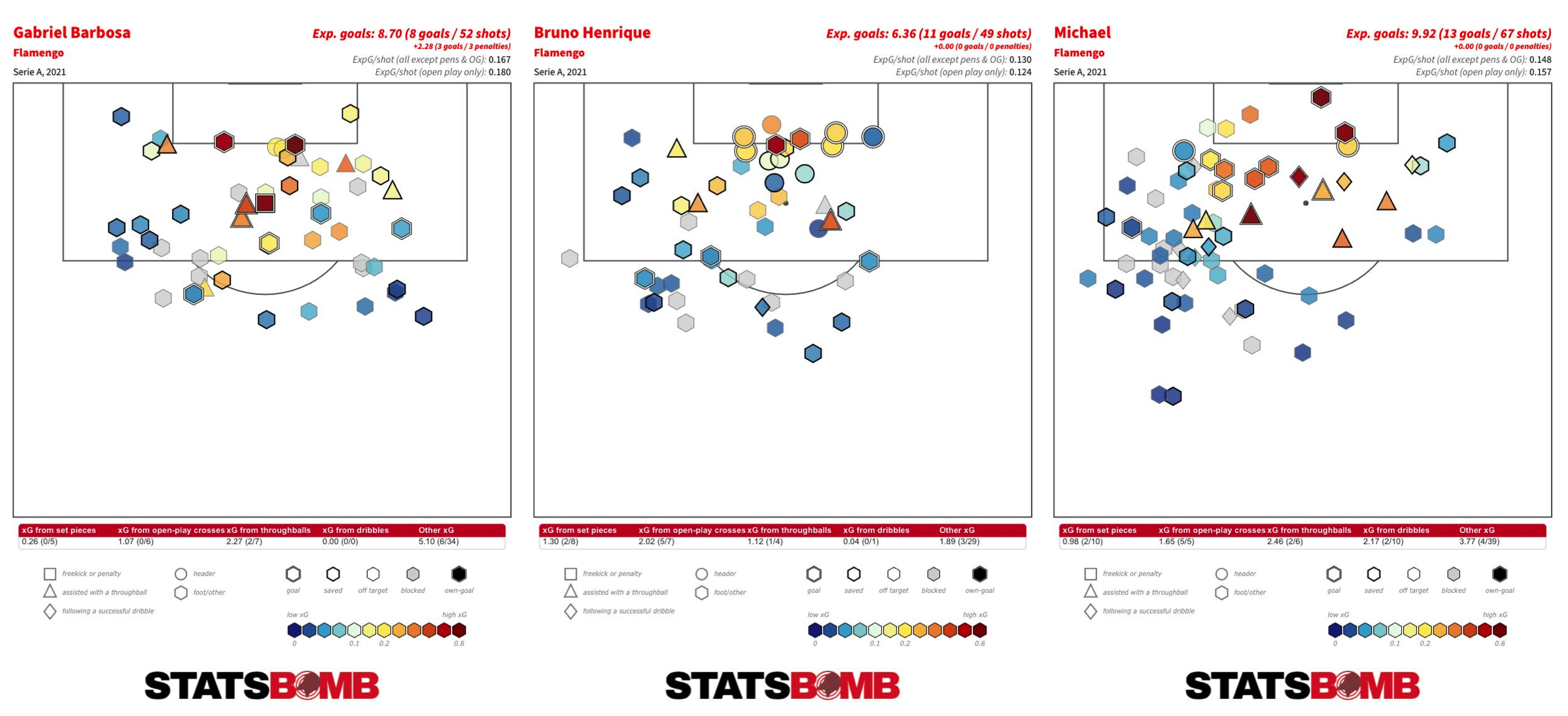 In terms of advancing the ball into attacking areas, it is the contribution of ex-Atlético Madrid and Chelsea left-back Filipe Luís that stands out. He is much more active in infield areas than the average Serie A full-back -- on the other side of the pitch either Mauricio Isla or the promising Matheuzinho generally play much higher and wider -- and leads both his team and the league in deep progressions (passes or carries into the final third), distance advanced towards goal in the attacking half and once all actions directly related to shots have been stripped out, OBV. At 36, he's still going strong.
In terms of advancing the ball into attacking areas, it is the contribution of ex-Atlético Madrid and Chelsea left-back Filipe Luís that stands out. He is much more active in infield areas than the average Serie A full-back -- on the other side of the pitch either Mauricio Isla or the promising Matheuzinho generally play much higher and wider -- and leads both his team and the league in deep progressions (passes or carries into the final third), distance advanced towards goal in the attacking half and once all actions directly related to shots have been stripped out, OBV. At 36, he's still going strong.  Ball progression is more evenly split between the two sides of the pitch at Palmeiras, with a mix of carries and passes from Dudu on the left -- second to Filipe Luis in the league in terms of distance advanced towards goal in the attacking half -- allied to the regular forward movements of right-back Marcos Rocha (or his deputy Gabriel Menino). Further back, Luan is among the Serie A central defenders who add most value with their passing according to OBV.
Ball progression is more evenly split between the two sides of the pitch at Palmeiras, with a mix of carries and passes from Dudu on the left -- second to Filipe Luis in the league in terms of distance advanced towards goal in the attacking half -- allied to the regular forward movements of right-back Marcos Rocha (or his deputy Gabriel Menino). Further back, Luan is among the Serie A central defenders who add most value with their passing according to OBV.  The right is, though, undoubtedly their most productive side in terms of chance creation, with the dark red colouration inside the area there on the OBV chart above primarily representing the excursions of Rocha, forward Rony and attacking-midfield drifter Gustavo Scarpa. Scarpa has been Palmeiras' most profile shooter and chance creator in the league this season, with three non-penalty goals and 11 assists to his credit and the league's highest OBV contribution per 90 amongst all players with at least 900 minutes of playing time. But he has seen comparatively few minutes in the Libertadores and is most likely to start the final from the bench. With Luiz Adriano expected to miss out through injury, coach Abel Ferreira is likely to start Rony as the main striker in a formation that could vary between a 4-3-2-1 and 3-4-2-1 depending on the positioning of Felipe Melo, still going at 38. In the league, Rony has spent more time out wide than he did last season, with a consequent effect on his shot volume and goal output, but he is the team's top scorer in the Libertadores, with six goals to his credit -- 0.78 per 90.
The right is, though, undoubtedly their most productive side in terms of chance creation, with the dark red colouration inside the area there on the OBV chart above primarily representing the excursions of Rocha, forward Rony and attacking-midfield drifter Gustavo Scarpa. Scarpa has been Palmeiras' most profile shooter and chance creator in the league this season, with three non-penalty goals and 11 assists to his credit and the league's highest OBV contribution per 90 amongst all players with at least 900 minutes of playing time. But he has seen comparatively few minutes in the Libertadores and is most likely to start the final from the bench. With Luiz Adriano expected to miss out through injury, coach Abel Ferreira is likely to start Rony as the main striker in a formation that could vary between a 4-3-2-1 and 3-4-2-1 depending on the positioning of Felipe Melo, still going at 38. In the league, Rony has spent more time out wide than he did last season, with a consequent effect on his shot volume and goal output, but he is the team's top scorer in the Libertadores, with six goals to his credit -- 0.78 per 90.  At the other end of the pitch, there is an even starker difference in approach between the two sides. Flamengo not only defend further away from their own goal than any other Serie A side, but they are also one of the league's most aggressive teams in closing down opponents, particularly so directly after losing possession.
At the other end of the pitch, there is an even starker difference in approach between the two sides. Flamengo not only defend further away from their own goal than any other Serie A side, but they are also one of the league's most aggressive teams in closing down opponents, particularly so directly after losing possession.  Palmeiras, meanwhile, defend marginally deeper than the league average, and are clearly less active defensively in the opposition half.
Palmeiras, meanwhile, defend marginally deeper than the league average, and are clearly less active defensively in the opposition half.  Interestingly, though, both appear equally proficient in converting opposition turnovers into efforts on goal, figuring amongst the Serie A teams who most often shoot and score within 20 seconds of regaining possession. Flamengo and Palmeiras have already met twice in the league this season, with Flamengo emerging victorious on both occasions. They won 1-0 with a dominant performance on the opening day of the season and then 3-1 away from home a couple of months back in what was actually a closer match in terms of chance quantity and quality. Flamengo are again the most probable victors on Saturday, but Palmeiras have already seen off two other Brazilian teams to make it this far, and the reigning champions certainly shouldn't be discounted. The stage is set for an entertaining final.
Interestingly, though, both appear equally proficient in converting opposition turnovers into efforts on goal, figuring amongst the Serie A teams who most often shoot and score within 20 seconds of regaining possession. Flamengo and Palmeiras have already met twice in the league this season, with Flamengo emerging victorious on both occasions. They won 1-0 with a dominant performance on the opening day of the season and then 3-1 away from home a couple of months back in what was actually a closer match in terms of chance quantity and quality. Flamengo are again the most probable victors on Saturday, but Palmeiras have already seen off two other Brazilian teams to make it this far, and the reigning champions certainly shouldn't be discounted. The stage is set for an entertaining final.
A base de dados da StatsBomb é a única criada por profissionais de futebol. Com mais detalhe e precisão do que os dados de outros fornecedores, a StatsBomb é a melhor opção para clubes habilidosos, agências, grupos de mídia e casas de apostas. Quer saber mais? www.statsbomb.com/pt













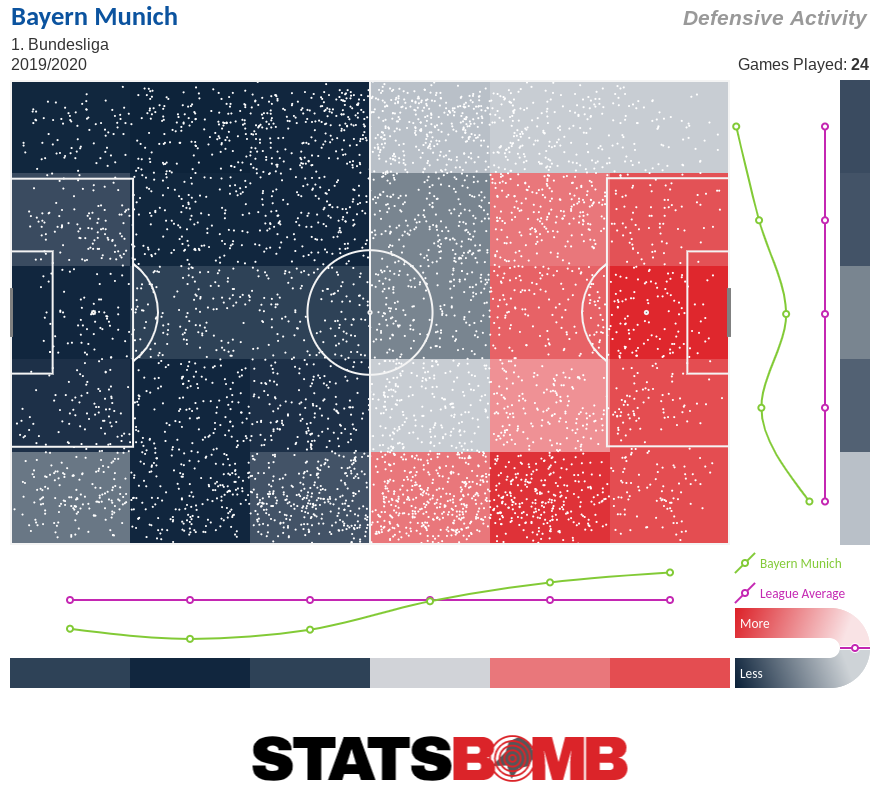







 Defensively the side is stable and dependable. They concede only 0.88 expected goals per match, the third-best in the league. They’re admittedly very tough to break down, and they remain steady in a fairly unique way. They counterpress high when they lose the ball deep in enemy territory, and otherwise defend very deep, leaving the entire middle of the field to their opponent's control.
Defensively the side is stable and dependable. They concede only 0.88 expected goals per match, the third-best in the league. They’re admittedly very tough to break down, and they remain steady in a fairly unique way. They counterpress high when they lose the ball deep in enemy territory, and otherwise defend very deep, leaving the entire middle of the field to their opponent's control. 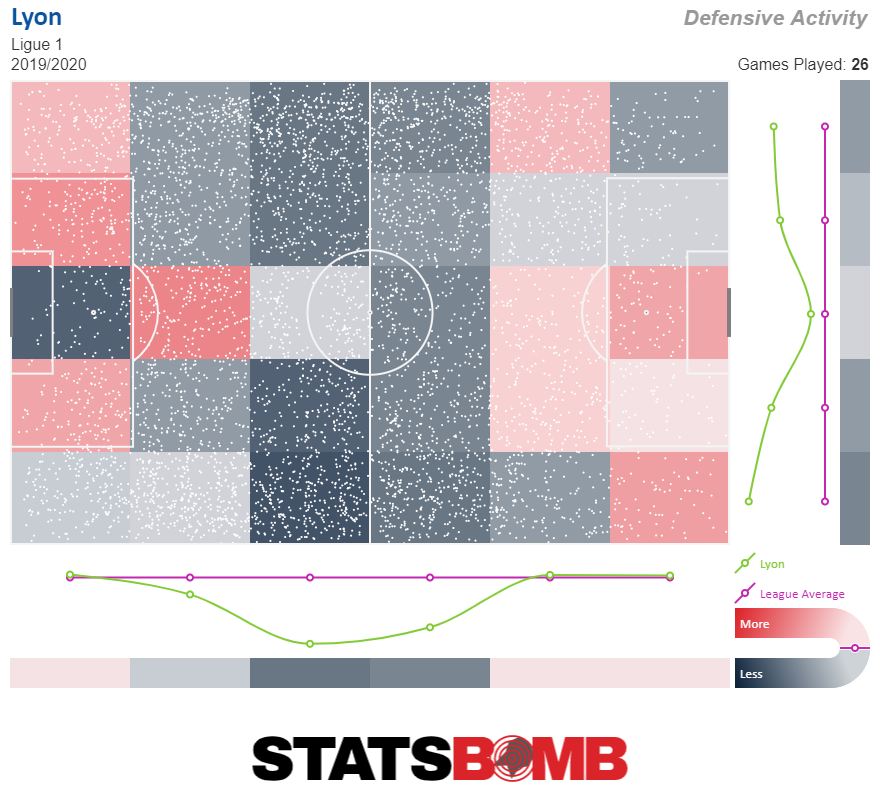 Overall there’s nothing precisely wrong with this team, it’s just that there’s nothing about them that suggests they’re going to be difficult for a team like Juventus to handle. Specifically, a team that cedes the midfield is going to be music to Maurizio Sarri’s very Italian ears. Juventus is perfectly happy to simply keep the ball. They have the highest pass percentage in Serie A at 87% and they virtually never play long; only Napoli play the ball shorter on average than Juventus’s average keeper pass length of 30.28. But, despite the fact that they're comfortable keeping the ball, they aren’t particularly aggressive at moving it into the penalty area. Six teams in Serie A play more passes into the box per match than Juventus, and Atalanta, Roma and Lazio all complete more passes per match within 20 yards of their opponent’s goal as well.
Overall there’s nothing precisely wrong with this team, it’s just that there’s nothing about them that suggests they’re going to be difficult for a team like Juventus to handle. Specifically, a team that cedes the midfield is going to be music to Maurizio Sarri’s very Italian ears. Juventus is perfectly happy to simply keep the ball. They have the highest pass percentage in Serie A at 87% and they virtually never play long; only Napoli play the ball shorter on average than Juventus’s average keeper pass length of 30.28. But, despite the fact that they're comfortable keeping the ball, they aren’t particularly aggressive at moving it into the penalty area. Six teams in Serie A play more passes into the box per match than Juventus, and Atalanta, Roma and Lazio all complete more passes per match within 20 yards of their opponent’s goal as well.  There are reasons to question whether Juventus’s approach of keeping the ball forever, taking lots of shots (their 17.36 per match is third in the league) but being relatively conservative when it comes to moving the ball into the penalty area is a solid approach against better teams. It leaves them somewhat prone to bombing away from distance with mediocre shots, and their 0.09 xG per shot in Serie A is a decidedly average eighth. But, against Lyon, who won’t bother to contest midfield or try to keep the ball, or do much of anything besides kick it long and drop back and defend, it shouldn’t be a problem.
There are reasons to question whether Juventus’s approach of keeping the ball forever, taking lots of shots (their 17.36 per match is third in the league) but being relatively conservative when it comes to moving the ball into the penalty area is a solid approach against better teams. It leaves them somewhat prone to bombing away from distance with mediocre shots, and their 0.09 xG per shot in Serie A is a decidedly average eighth. But, against Lyon, who won’t bother to contest midfield or try to keep the ball, or do much of anything besides kick it long and drop back and defend, it shouldn’t be a problem.  But the real master strike from Zidane was compensating for the ageing duo of Toni Kroos and Luka Modrić by easing the latter into a more limited role and featuring the younger and much more active Fede Valverde instead. Valverde’s inclusion in the squad means that, alongside Casemiro, there are now two more rugged midfielders in the side at any given time. This has turned Madrid into the best defensive team in La Liga with only 0.70 xG conceded per match. The question, however, is whether that defense can hold against a Manchester City side that is legitimately one of the best in the world. Lost in the historic nature of Liverpool’s season is the fact that City’s underlying numbers are actually better than the runaway presumed champions. They are an absurd attacking team. The side’s non-penalty xG of 2.21 is testing the outer limits of the possible and is almost an entire half goal better than their closes attacking competitor, Liverpool.
But the real master strike from Zidane was compensating for the ageing duo of Toni Kroos and Luka Modrić by easing the latter into a more limited role and featuring the younger and much more active Fede Valverde instead. Valverde’s inclusion in the squad means that, alongside Casemiro, there are now two more rugged midfielders in the side at any given time. This has turned Madrid into the best defensive team in La Liga with only 0.70 xG conceded per match. The question, however, is whether that defense can hold against a Manchester City side that is legitimately one of the best in the world. Lost in the historic nature of Liverpool’s season is the fact that City’s underlying numbers are actually better than the runaway presumed champions. They are an absurd attacking team. The side’s non-penalty xG of 2.21 is testing the outer limits of the possible and is almost an entire half goal better than their closes attacking competitor, Liverpool.  This isn’t to say City are perfect. They aren’t quite a vintage Guardiola team, and are vulnerable to the counterattack in a way that the best sides Guardiola has coached over the years have not been. Their defense is still very good; they simply have the ball so much, and are so aggressive at winning it back when they lose it that they concede very few shots. But when counterattacks do happen, they can be exposed.
This isn’t to say City are perfect. They aren’t quite a vintage Guardiola team, and are vulnerable to the counterattack in a way that the best sides Guardiola has coached over the years have not been. Their defense is still very good; they simply have the ball so much, and are so aggressive at winning it back when they lose it that they concede very few shots. But when counterattacks do happen, they can be exposed. 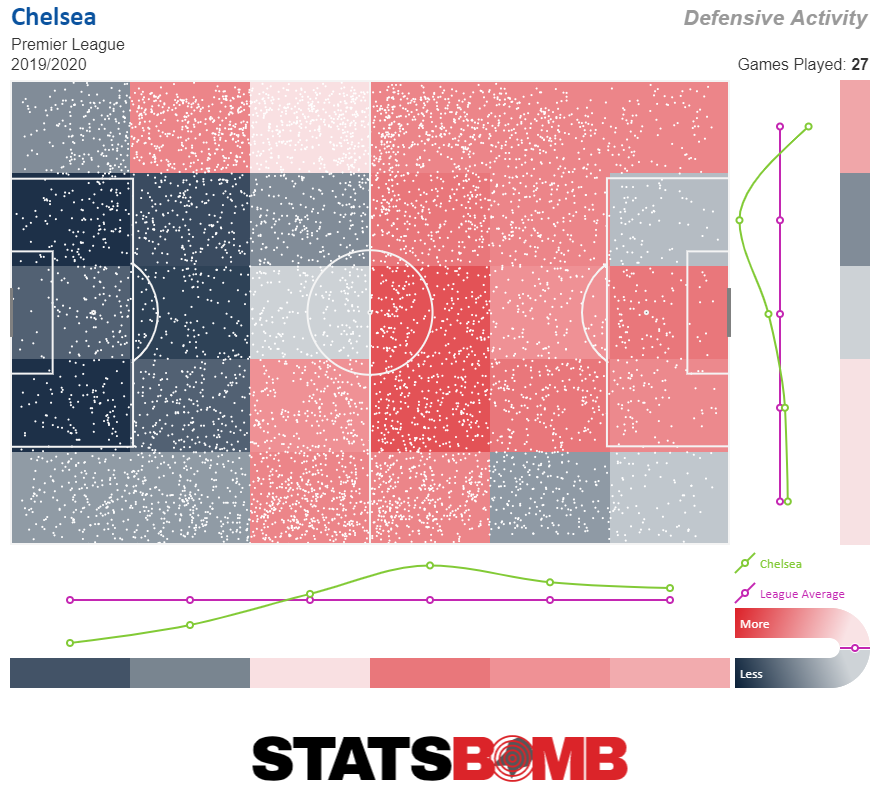
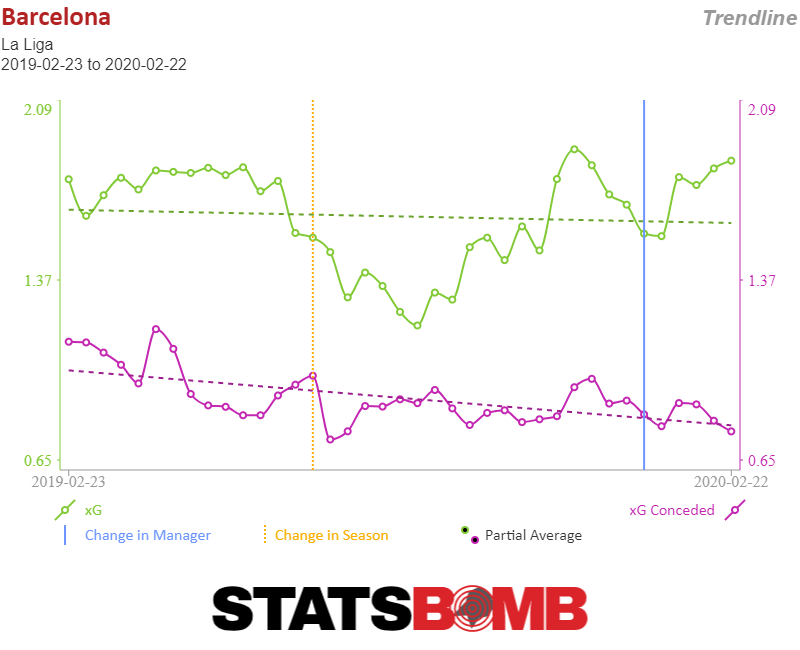 Barcelona’s main issue is still that everything runs through Messi. Five years ago their main problem was that everything ran through Messi, and the situation has only gotten more extreme since then. With Luis Suárez out, his combined goals and assists per 90 minutes are almost double anybody else’s on the team.
Barcelona’s main issue is still that everything runs through Messi. Five years ago their main problem was that everything ran through Messi, and the situation has only gotten more extreme since then. With Luis Suárez out, his combined goals and assists per 90 minutes are almost double anybody else’s on the team.  You’d be tempted to say it’s unsustainable, but, well, it’s Messi. Napoli’s situation is a little more complicated. On the one hand, they’re in sixth place with a goal difference of exactly four. That’s quite the drop for a team that spent years trailing only Juventus in Serie A. On the other hand, their xG difference of 0.55 is the fourth-best in the league and paints them in a considerably better light than their record and place in the table does. Put it all together and you have a Napoli team that is definitely worsening in comparison to seasons past, but not nearly as quickly as their drop down the table suggests. Specifically, from last year to this year the defense has eroded and they've gained little attacking input to compensate.
You’d be tempted to say it’s unsustainable, but, well, it’s Messi. Napoli’s situation is a little more complicated. On the one hand, they’re in sixth place with a goal difference of exactly four. That’s quite the drop for a team that spent years trailing only Juventus in Serie A. On the other hand, their xG difference of 0.55 is the fourth-best in the league and paints them in a considerably better light than their record and place in the table does. Put it all together and you have a Napoli team that is definitely worsening in comparison to seasons past, but not nearly as quickly as their drop down the table suggests. Specifically, from last year to this year the defense has eroded and they've gained little attacking input to compensate.  Nothing much has changed under new management. Carlo Ancelotti and his flexible 4-4-2 might have departed for Everton and been replaced by Gennaro Gattuso and a more traditional 4-3-3, but the basic contours of the problem remain exactly the same. Napoli are a pretty good side, but they aren’t as good as they used to be, and they certainly aren’t getting any better. Despite their struggles Barcelona are a significantly better side. When you’re a team that’s getting slowly worse it sure helps to have Lionel Messi.
Nothing much has changed under new management. Carlo Ancelotti and his flexible 4-4-2 might have departed for Everton and been replaced by Gennaro Gattuso and a more traditional 4-3-3, but the basic contours of the problem remain exactly the same. Napoli are a pretty good side, but they aren’t as good as they used to be, and they certainly aren’t getting any better. Despite their struggles Barcelona are a significantly better side. When you’re a team that’s getting slowly worse it sure helps to have Lionel Messi.  But, despite the attacking struggles, it’s really defensively where the Blues are likely to get exposed against Bayern. Chelsea are a very aggressive defensive side. They don’t know how to sit back and instead want to press from the front and defend in their opponent’s half. At their best they create opportunities for their attacking trio by winning the ball high up the pitch. At their worst they end up playing destabilized football, exposing themselves to opponents who are disciplined enough to hold the ball against them.
But, despite the attacking struggles, it’s really defensively where the Blues are likely to get exposed against Bayern. Chelsea are a very aggressive defensive side. They don’t know how to sit back and instead want to press from the front and defend in their opponent’s half. At their best they create opportunities for their attacking trio by winning the ball high up the pitch. At their worst they end up playing destabilized football, exposing themselves to opponents who are disciplined enough to hold the ball against them.  The same is true of Thiago, who both advances the ball from deep and moves forward to help orchestrate the attack.
The same is true of Thiago, who both advances the ball from deep and moves forward to help orchestrate the attack.  It’s possible that a disciplined underdog might cause Bayern problems. Their attacking front line is great, and Robert Lewandowski continues to have an all-timer of a season, smashing goals from the best spots in the world.
It’s possible that a disciplined underdog might cause Bayern problems. Their attacking front line is great, and Robert Lewandowski continues to have an all-timer of a season, smashing goals from the best spots in the world.  But, maybe under the right circumstances, with a little bit of luck and a lot of deep defending an underdog could hold them and exploit the German giants on the counterattack. Chelsea under Lampard simply don’t have that club in their bag. In order to win they’re going to need Bayern’s midfield to crack under the pressure they apply. That seems exceedingly unlikely to happen.
But, maybe under the right circumstances, with a little bit of luck and a lot of deep defending an underdog could hold them and exploit the German giants on the counterattack. Chelsea under Lampard simply don’t have that club in their bag. In order to win they’re going to need Bayern’s midfield to crack under the pressure they apply. That seems exceedingly unlikely to happen.

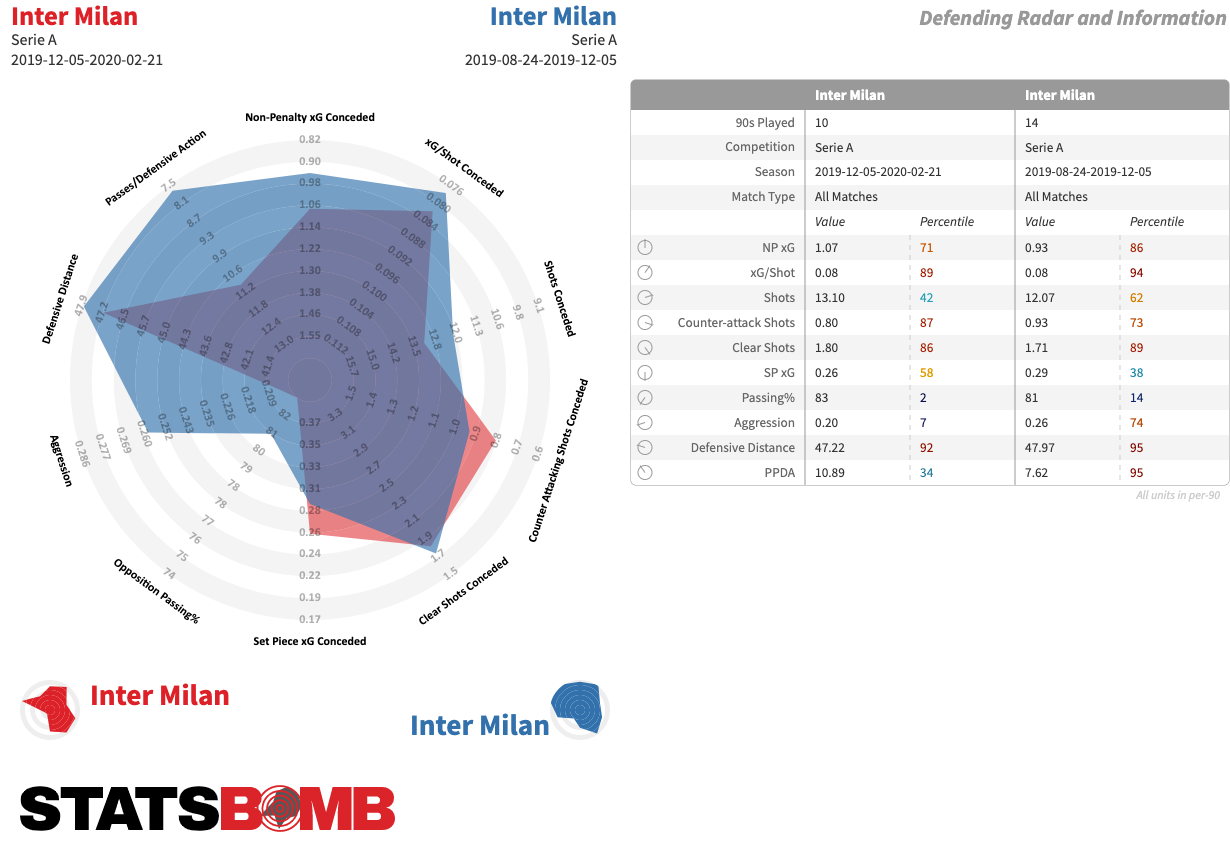




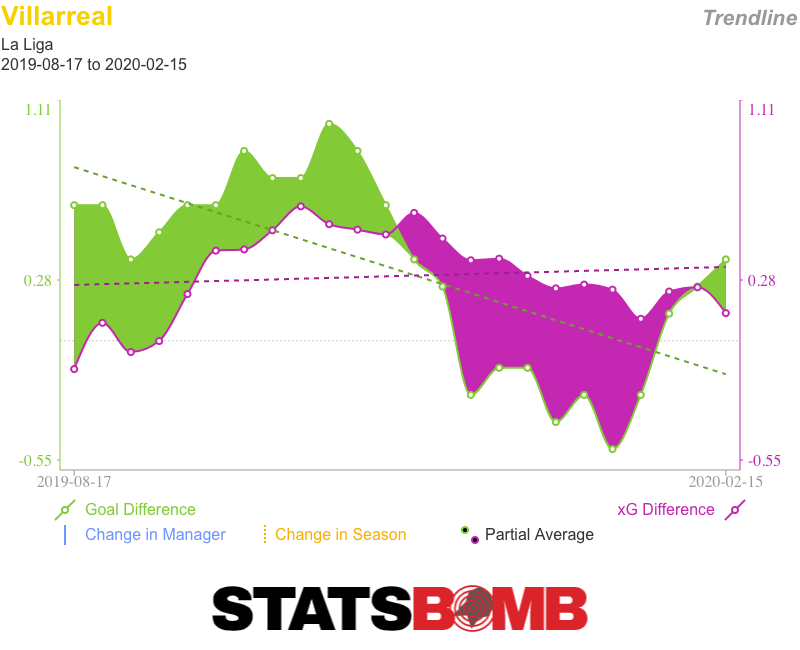







 Lamela and Moura are both at the top of the list, though Lamela’s 2.21 shots per 90 minutes are from extremely limited minutes while Moura’s are simply not an impressive return for a player who has spent significant minutes functioning as a striker. Bergwijn hasn’t yet played 600 minutes for Spurs, so he doesn’t make the chart, but he was at 2.19 per 90 in the easier Eredivisie with PSV Eindhovern. It’s possible that Spurs will be ably to get by simply by spreading all the shots around, but that’s a pretty big ask against a very good RB Leipzig team. Of course, Mourinho has experience scuttling more talented teams in the Champions League. Perhaps the most relevant place to look for inspiration is the first year of his second stint with Chelsea. He reached the semifinals of the Champions League despite the fact that the only two true strikers at his disposal were a mostly washed out Samuel Eto’o and a mostly injured Fernando Torres. So, Spurs fans can take heart that stranger things have, in fact, happened. If Mourinho’s history is any guide, he will attempt to muddy up the game and nip a goal on the counter, first and foremost denying control of the midfield to Leipzig. If that fails, he'll hope his side will be able to absorb sustained pressure. For Leipzig this likely means they’ll have to find alternate avenues to get into dangerous positions. Luckily for them, they have Timo Werner.
Lamela and Moura are both at the top of the list, though Lamela’s 2.21 shots per 90 minutes are from extremely limited minutes while Moura’s are simply not an impressive return for a player who has spent significant minutes functioning as a striker. Bergwijn hasn’t yet played 600 minutes for Spurs, so he doesn’t make the chart, but he was at 2.19 per 90 in the easier Eredivisie with PSV Eindhovern. It’s possible that Spurs will be ably to get by simply by spreading all the shots around, but that’s a pretty big ask against a very good RB Leipzig team. Of course, Mourinho has experience scuttling more talented teams in the Champions League. Perhaps the most relevant place to look for inspiration is the first year of his second stint with Chelsea. He reached the semifinals of the Champions League despite the fact that the only two true strikers at his disposal were a mostly washed out Samuel Eto’o and a mostly injured Fernando Torres. So, Spurs fans can take heart that stranger things have, in fact, happened. If Mourinho’s history is any guide, he will attempt to muddy up the game and nip a goal on the counter, first and foremost denying control of the midfield to Leipzig. If that fails, he'll hope his side will be able to absorb sustained pressure. For Leipzig this likely means they’ll have to find alternate avenues to get into dangerous positions. Luckily for them, they have Timo Werner.  It’s not just his obvious goal-scoring ability, but the fact that he’s equally superb at providing an outlet on the wings to receive the ball and turn and run in space. Here are all the successful passes played from Leipzig’s own half that Werner's received in the opposition half.
It’s not just his obvious goal-scoring ability, but the fact that he’s equally superb at providing an outlet on the wings to receive the ball and turn and run in space. Here are all the successful passes played from Leipzig’s own half that Werner's received in the opposition half.  Don’t be surprised if Spurs work hard to take away Leipzig’s ability to combine in midfield, forcing the German side to turn toward springing Werner over the top and in behind Spurs right back Serge Aurier. It’s nice when you can rely on a player who is both an expert goal scorer and an elite ball mover on the wing.
Don’t be surprised if Spurs work hard to take away Leipzig’s ability to combine in midfield, forcing the German side to turn toward springing Werner over the top and in behind Spurs right back Serge Aurier. It’s nice when you can rely on a player who is both an expert goal scorer and an elite ball mover on the wing.  Most impressively, Atalanta have added a strong defense to the attacking juggernaut that carried them to the upper reaches of the table over the past few seasons. Only Juventus have a stingier record when it comes to xG conceded.
Most impressively, Atalanta have added a strong defense to the attacking juggernaut that carried them to the upper reaches of the table over the past few seasons. Only Juventus have a stingier record when it comes to xG conceded.  This isn’t the profile of a team that is just be happy to be here. Rather, Atalanta look prepared to dispatch a much weaker opponent as they gear up for stiffer challenges deeper in the tournament. In part, that’s because Valencia are simply not a good side at the moment. They sit seventh in La Liga, tied with Villarreal on 38 points, but the stats suggest that position strongly flatters them. They have one of the worst non-penalty xG differences in the league. The side’s attack is average, but on defense they are simply absolutely terrible, the second-worst team in La Liga in xG conceded.
This isn’t the profile of a team that is just be happy to be here. Rather, Atalanta look prepared to dispatch a much weaker opponent as they gear up for stiffer challenges deeper in the tournament. In part, that’s because Valencia are simply not a good side at the moment. They sit seventh in La Liga, tied with Villarreal on 38 points, but the stats suggest that position strongly flatters them. They have one of the worst non-penalty xG differences in the league. The side’s attack is average, but on defense they are simply absolutely terrible, the second-worst team in La Liga in xG conceded.  This is, uh, not a sustainable defensive approach.
This is, uh, not a sustainable defensive approach.  However, they simply give up one too many attempts — even if those attempts are mediocre — conceding almost 15 shots a game on average, the second-most in La Liga. Giving an elite attacking side like Atalanta carte blanche to attack the penalty area is not likely going to end well for this Valencia team. Sports are awesome and unsure and no result is guaranteed, but what is overwhelmingly likely is that Atalanta are going to take the game to Valencia, and Valencia will have to hold on for dear life and hope for an unlikely chance to steal some points against the run of play.
However, they simply give up one too many attempts — even if those attempts are mediocre — conceding almost 15 shots a game on average, the second-most in La Liga. Giving an elite attacking side like Atalanta carte blanche to attack the penalty area is not likely going to end well for this Valencia team. Sports are awesome and unsure and no result is guaranteed, but what is overwhelmingly likely is that Atalanta are going to take the game to Valencia, and Valencia will have to hold on for dear life and hope for an unlikely chance to steal some points against the run of play.
 Again, in theory, it's true that tight execution and well-conceived set-piece design can let a team run a bit ahead of expectation on set pieces, but figuring out exactly how much of Liverpool’s achievement is an accurate reflection of execution versus a sprinkling of good fortune is devilishly difficult Similarly, even if we attribute a slice of those goals to being excellent at what they do, historically speaking, it's just a matter of time before defenses adjust and Liverpool’s edge will have to be generated anew from different strategies. Most years, you’d expect this Liverpool strength to be countered by Atlético Madrid’s own strength. After all, a big rugged defense and strong set-piece defending are Diego Simeone's calling card. However, that's not been the case this season. In fact, Atléti have conceded nine times from set pieces this season. On the one hand, that number isn’t quite as bad as it seems. They’ve only conceded 6.86 xG, so there’s some bad luck hovering above them (though even that 6.86 figure is a disappointing total for a Simeone side).
Again, in theory, it's true that tight execution and well-conceived set-piece design can let a team run a bit ahead of expectation on set pieces, but figuring out exactly how much of Liverpool’s achievement is an accurate reflection of execution versus a sprinkling of good fortune is devilishly difficult Similarly, even if we attribute a slice of those goals to being excellent at what they do, historically speaking, it's just a matter of time before defenses adjust and Liverpool’s edge will have to be generated anew from different strategies. Most years, you’d expect this Liverpool strength to be countered by Atlético Madrid’s own strength. After all, a big rugged defense and strong set-piece defending are Diego Simeone's calling card. However, that's not been the case this season. In fact, Atléti have conceded nine times from set pieces this season. On the one hand, that number isn’t quite as bad as it seems. They’ve only conceded 6.86 xG, so there’s some bad luck hovering above them (though even that 6.86 figure is a disappointing total for a Simeone side). 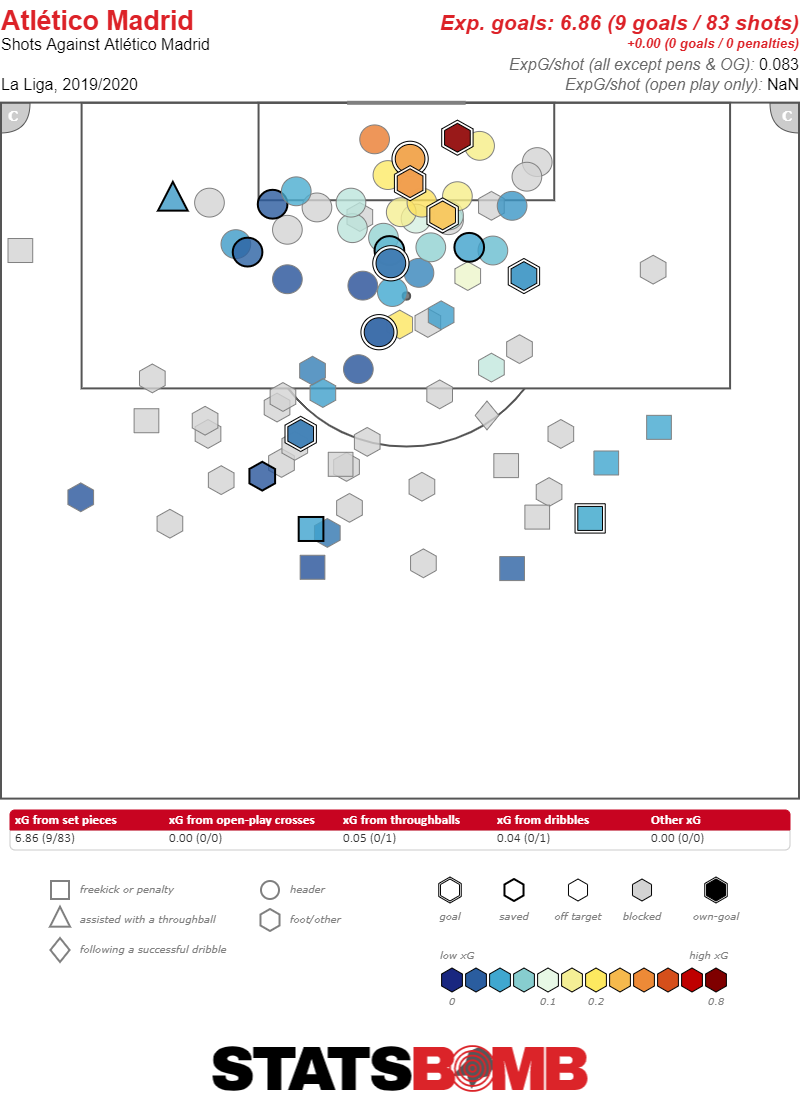 On the other hand, a whole heck of a lot of that bad luck seems to fall directly at the hands (and feet, and incredibly long arms) of superstar keeper Jan Oblak. Despite his formidable track record, Oblak is having a relatively poor season — he's allowed two more goals than an average keeper would given the shots on goal he’s faced.
On the other hand, a whole heck of a lot of that bad luck seems to fall directly at the hands (and feet, and incredibly long arms) of superstar keeper Jan Oblak. Despite his formidable track record, Oblak is having a relatively poor season — he's allowed two more goals than an average keeper would given the shots on goal he’s faced.  Break out the set pieces and something even more surprising jumps out. Oblak is his usual stellar self during open play, but he’s conceded a whopping 4.29 goals more from set pieces more than expected from an average keeper. How much of that is a true reflection of his poor play and how much is a knock-on effect from a team struggling to defend is up for debate. Either way, it’s an eye-popping number
Break out the set pieces and something even more surprising jumps out. Oblak is his usual stellar self during open play, but he’s conceded a whopping 4.29 goals more from set pieces more than expected from an average keeper. How much of that is a true reflection of his poor play and how much is a knock-on effect from a team struggling to defend is up for debate. Either way, it’s an eye-popping number  Ultimately a match with two strong defensive sides means this tie could well come down to set pieces. And, if so, Liverpool will likely have the edge.
Ultimately a match with two strong defensive sides means this tie could well come down to set pieces. And, if so, Liverpool will likely have the edge. 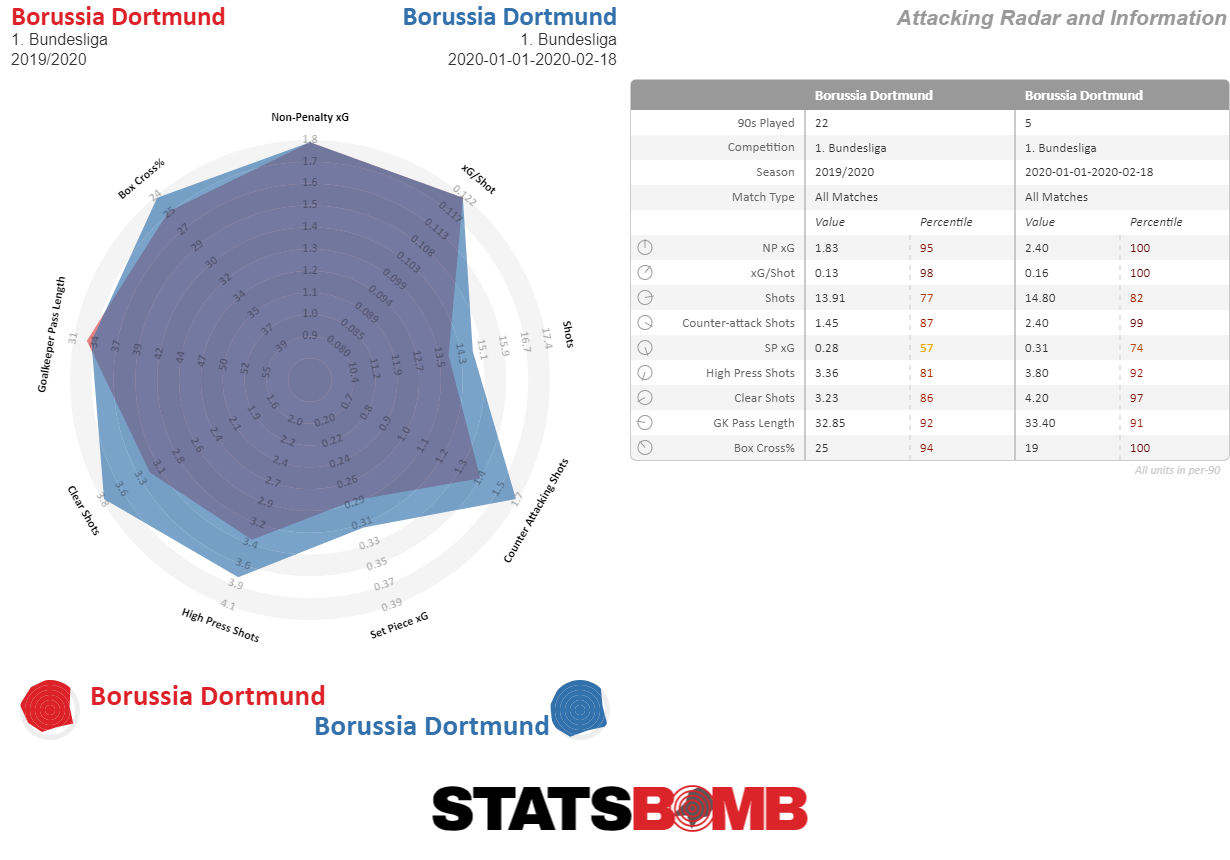 PSG, on the other hand, face the same problem season in and season out. They are simply so much better than other Ligue 1 teams that it is impossible to get a true impression of how they will fare against stronger competition. Dortmund are at least the second-best team PSG have played this season (depending on how you interpret Dortmund’s form now and Madrid’s form at the beginning of the year, arguably they’re the best). On the other hand, as always, PSG has Kylian Mbappé putting up these numbers,
PSG, on the other hand, face the same problem season in and season out. They are simply so much better than other Ligue 1 teams that it is impossible to get a true impression of how they will fare against stronger competition. Dortmund are at least the second-best team PSG have played this season (depending on how you interpret Dortmund’s form now and Madrid’s form at the beginning of the year, arguably they’re the best). On the other hand, as always, PSG has Kylian Mbappé putting up these numbers,  And Neymar putting up these numbers.
And Neymar putting up these numbers.  Thomas Tuchel runs a team that wants the ball, needs the ball and uses the ball in midfield to create great chances for the side’s superstars in the box. They aren’t obsessed with taking a lot of shots, but they are obsessed with taking the best ones.
Thomas Tuchel runs a team that wants the ball, needs the ball and uses the ball in midfield to create great chances for the side’s superstars in the box. They aren’t obsessed with taking a lot of shots, but they are obsessed with taking the best ones.  If things go wrong it will be because Dortmund manage to thwart that plan by counterattacking into the space that PSG’s extensive and highly aggressive possession leaves available. If PSG’s domestic season is any indication they will be just fine. This attacking radar simply outweighs any concerns.
If things go wrong it will be because Dortmund manage to thwart that plan by counterattacking into the space that PSG’s extensive and highly aggressive possession leaves available. If PSG’s domestic season is any indication they will be just fine. This attacking radar simply outweighs any concerns. 
 Any analysis of why Leicester are wobbling must begin with Jamie Vardy. The striker had a hot streak in autumn, scoring 13 goals from an xG of 8.48 (penalties excluded). That kind of efficiency is hard to maintain for anyone not named Lionel Messi (and usually for people named Lionel Messi, too), and Vardy has since lost his sharpness, scoring once from an xG of 1.50. Just in case anyone doubted whether his fortunes really had changed, Vardy missed a penalty at Burnley just before the Clarets struck the winner. And Vardy is not only missing chances, he's getting fewer of them.
Any analysis of why Leicester are wobbling must begin with Jamie Vardy. The striker had a hot streak in autumn, scoring 13 goals from an xG of 8.48 (penalties excluded). That kind of efficiency is hard to maintain for anyone not named Lionel Messi (and usually for people named Lionel Messi, too), and Vardy has since lost his sharpness, scoring once from an xG of 1.50. Just in case anyone doubted whether his fortunes really had changed, Vardy missed a penalty at Burnley just before the Clarets struck the winner. And Vardy is not only missing chances, he's getting fewer of them.  The same goes for Leicester as a team. While they produced few big chances in their first games, they did face strong teams during that spell and still managed to exceed their metrics. When the schedule got easier, they took off. Since then two things have happened. First, they've stopped playing way ahead of their xG.
The same goes for Leicester as a team. While they produced few big chances in their first games, they did face strong teams during that spell and still managed to exceed their metrics. When the schedule got easier, they took off. Since then two things have happened. First, they've stopped playing way ahead of their xG.  Second, the underlying metrics have themselves nosedived.
Second, the underlying metrics have themselves nosedived.  What happened? Given what we know about Vardy, it feels natural to begin this exploration by examining the attack. Brendan Rodgers made only minor changes to his set-up, benching the odd out-of-form player and alternating between a 4-3-3 and 4-4-2 diamond. They've had no major injuries; while Vardy has missed two games, Leicester have won them both. Neither personnel nor tactics offer any clear answer as to why the attack has worsened in almost every aspect.
What happened? Given what we know about Vardy, it feels natural to begin this exploration by examining the attack. Brendan Rodgers made only minor changes to his set-up, benching the odd out-of-form player and alternating between a 4-3-3 and 4-4-2 diamond. They've had no major injuries; while Vardy has missed two games, Leicester have won them both. Neither personnel nor tactics offer any clear answer as to why the attack has worsened in almost every aspect.  The standout metric here is the shots after counter-attacks. You would think teams would've have wised up to Vardy’s runs in behind the defence. Yet in a spell where Leicester spends less time in the lead, it would make sense if opponents defend deeper to protect their leads. In any case, the attack is not been the biggest problem for Leicester. Before the Norwich draw they had conceded two goals in seven league games. They've now shipped 16 goals in 9 games. And as for the defensive metrics, well…
The standout metric here is the shots after counter-attacks. You would think teams would've have wised up to Vardy’s runs in behind the defence. Yet in a spell where Leicester spends less time in the lead, it would make sense if opponents defend deeper to protect their leads. In any case, the attack is not been the biggest problem for Leicester. Before the Norwich draw they had conceded two goals in seven league games. They've now shipped 16 goals in 9 games. And as for the defensive metrics, well… 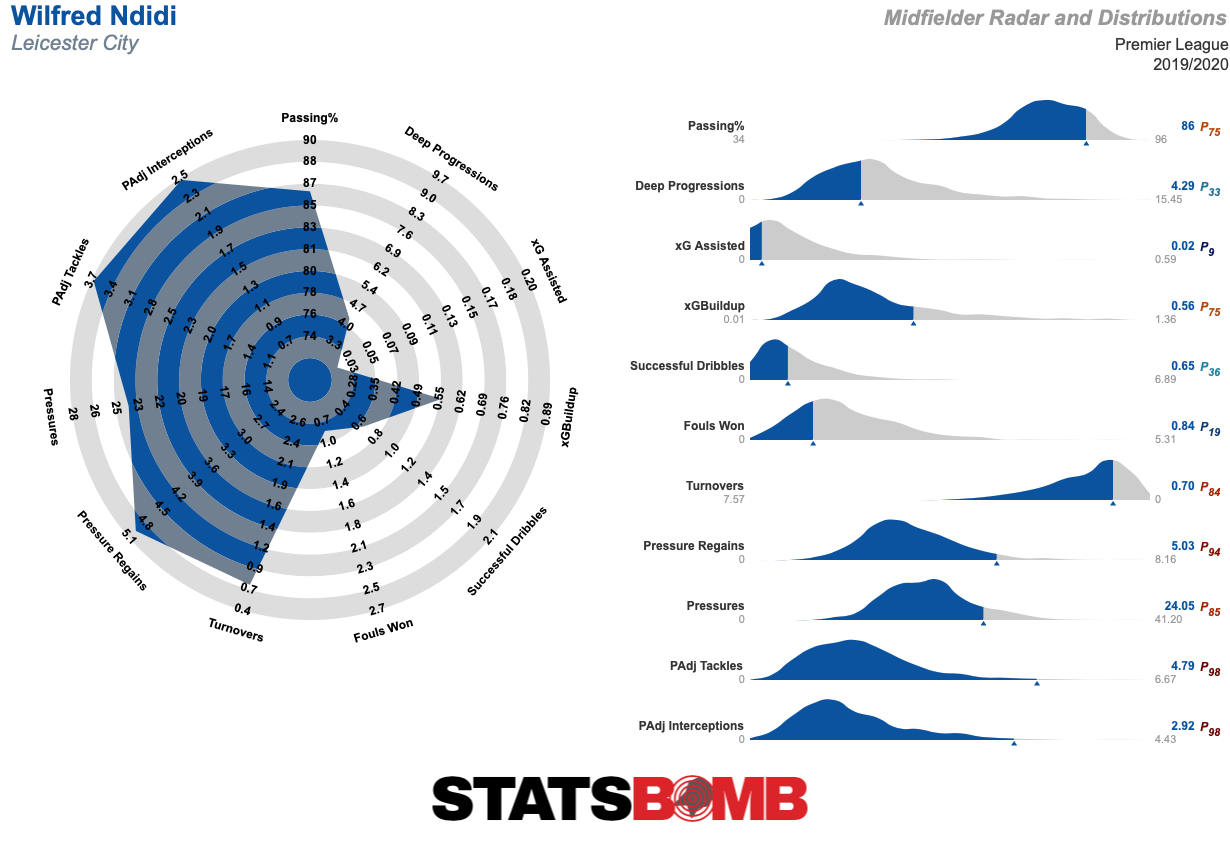 Still, a collective decline of this scale cannot be down to one player. Going back to the radar of horror, two metrics have declined more than others. One is set-piece xG conceded, which has jumped from 0.17 to 0.38 per game. Leicester have conceded four set-piece goals in their last nine games, based on an xG of 3.64 and 27 shots. Not good. The other metric is xG per shot conceded, which has increased from 0.09 to 0.13. If we look at the shots Leicester allowed from close range during their golden autumn, hardly any took place inside the six-yard box. Such was their aerial dominance and ability to stop crosses that they did not have to block a single shot inside this area.
Still, a collective decline of this scale cannot be down to one player. Going back to the radar of horror, two metrics have declined more than others. One is set-piece xG conceded, which has jumped from 0.17 to 0.38 per game. Leicester have conceded four set-piece goals in their last nine games, based on an xG of 3.64 and 27 shots. Not good. The other metric is xG per shot conceded, which has increased from 0.09 to 0.13. If we look at the shots Leicester allowed from close range during their golden autumn, hardly any took place inside the six-yard box. Such was their aerial dominance and ability to stop crosses that they did not have to block a single shot inside this area. 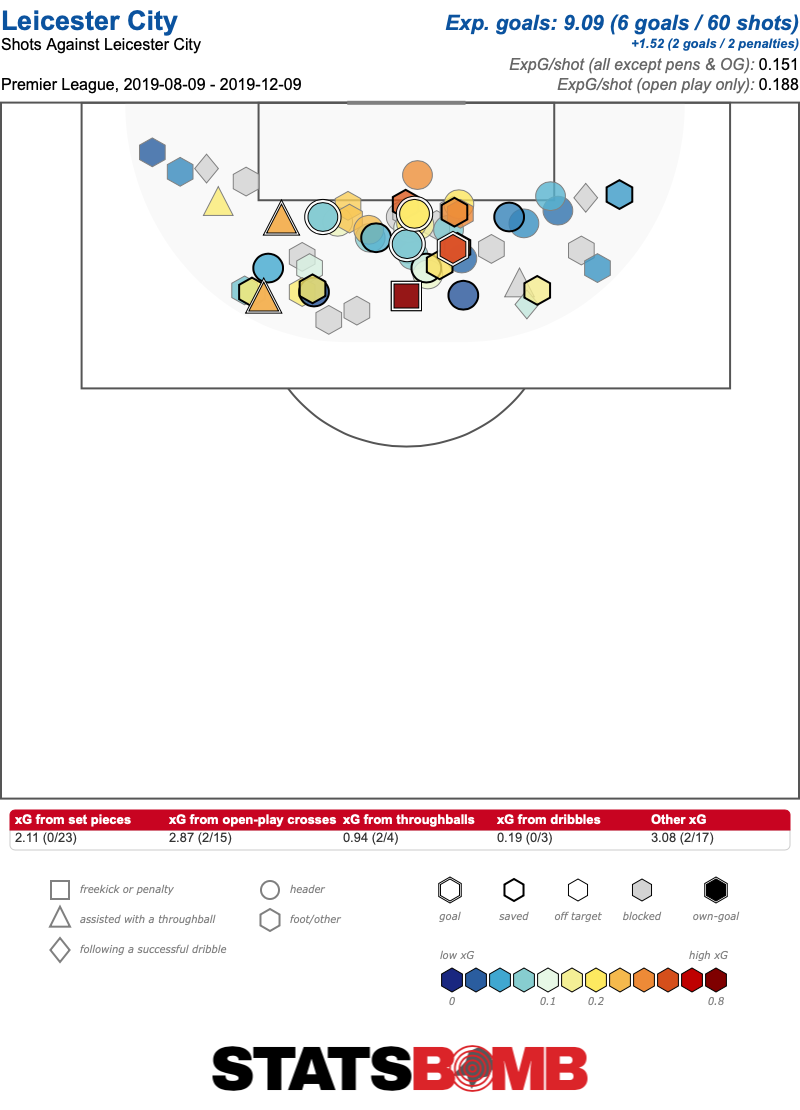 Since then, however, Leicester have given up a slew of shots from within six yards.
Since then, however, Leicester have given up a slew of shots from within six yards.  Time will tell whether Leicester will halt this wobbly spell. In any case, it looks unlikely to derail their season given they're 10 points clear of fifth place. After upcoming games against Wolves and City, they have four matches they're expected to win. None of their top-four rivals are showing signs of putting together a decent run, and should one of them suddenly get it together, Chelsea would surely be the first team to get caught. Rodgers will surely be thankful that, in this particular season, stable form is not the norm but the exception.
Time will tell whether Leicester will halt this wobbly spell. In any case, it looks unlikely to derail their season given they're 10 points clear of fifth place. After upcoming games against Wolves and City, they have four matches they're expected to win. None of their top-four rivals are showing signs of putting together a decent run, and should one of them suddenly get it together, Chelsea would surely be the first team to get caught. Rodgers will surely be thankful that, in this particular season, stable form is not the norm but the exception.